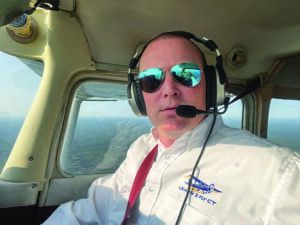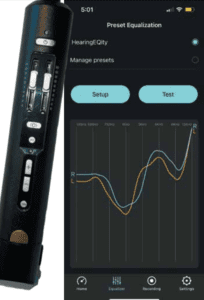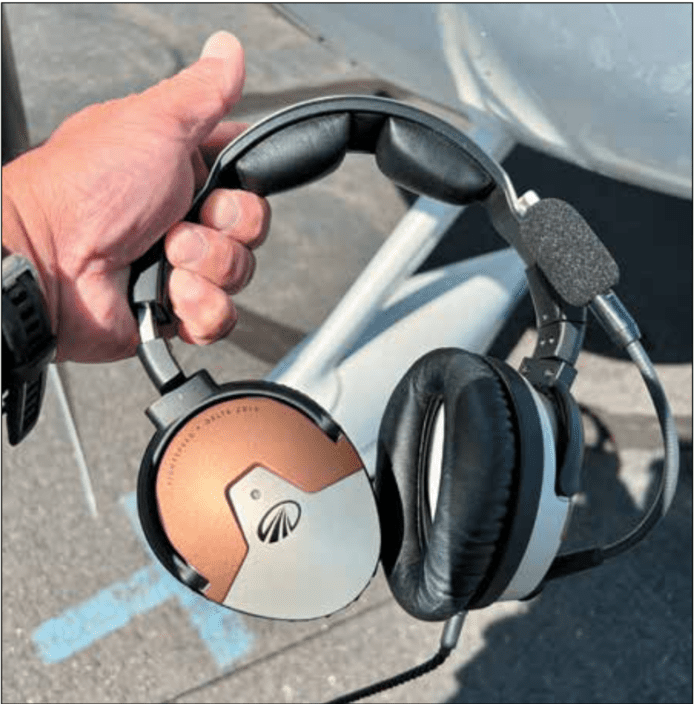You just don’t know how we’ll a new headset will hold up until it serves hard time in the harsh flight environment. Audio cables get pulled and eventually get caught in seat tracks, microphone booms get twisted and bent, plus the headphone ear seals and main frames live hard, sweaty lives.
We wondered about all that and more when we easily recommended the new Lightspeed Delta Zulu in an Aviation Consumer field report over a year ago. So to see how it would hold up, we tossed our demo set in the relentlessly abusive long-term test pool. We handed the set out to ham-fisted students, demanding flight instructors and charter pilots, plus we tried—hard—to get the set to fail during our own use. Despite the torture, the $1199 Delta Zulu soldiers on.
USEFUL FEATURE SET
Lightspeed launched this headset as a “safety wearable” because it has built-in CO detection with a wide range of measuring capability—the low CO threshold cautionary warnings come between the 51-100 ppm range. You monitor the CO levels both aurally through the headset and visually on Lightspeed’s app, which has good trend monitoring. For us, it turned out to be a good utility for sniffing out exhaust leaks in the cabin. The sensor has a 10-year life and Lightspeed will replace it when the calendar runs out.
WEARING IT

For the most part, pilots and passengers in our evaluation group gave the Delta Zulu high marks for comfort and adjustability, although more than one dinged the microphone boom for not staying in place near the lips. On the other hand, it’s easy to reverse the orientation of the mic without knowing it. It matters because there is a front and back side, so keep the flat side perpendicular to the mouth, otherwise you’ll be talking into a piece of plastic and not the microphone element.
If you need more mic gain (sample the sidetone—which is the sound of your own voice when you transmit and talk on the intercom), there is an adjustment pot that’s accessible by removing the mic muff. We used the set with a wide variety of avionics and audio systems—from ancient King relics to the latest Garmin gear—and the set seemed we’ll compatible from a headphone audio standpoint.

The other unique feature is the set’s app-based HearingEQity feature, which uses the results of the user’s 12-frequency hearing analysis of each ear to tweak the headphone audio to compensate for hearing deficiencies. Hearing aid wearers told us the Delta Zulu instantly made a difference after fine-tuning the audio, while others with slight hearing loss didn’t notice any difference at all while wearing the set in a noisy cabin. We think for the majority of users with average hearing, this HearingEQity feature will be subtle, yet effective—or at least better than no adjustment.
Do the hearing test the right way for best results. We found that sitting in the airplane inside a quiet hangar (or in a garaged vehicle) yields the best results. You’ll need silence to accurately test. If you have a sizable hearing deficiency and use a Delta Zulu, we want to hear about your experience.
We wondered how Lightspeed’s new battery scheme would work. This is a lithium-ion battery pack that is spec’d to last around 30 hours, but we got less with heavy wireless Bluetooth use. There’s also a standard AA battery pack that’s easy to swap if the rechargeable pack tanks. You can also charge the set while it’s in use. The control module houses what Lightspeed calls a UAC (Universal Accessory Connector) for both data and charging input. The set gives you plenty of warning when power is getting low, with a red flashing power key annunciator that means it’ll be dead in a few more hours. We worried that swapping battery packs (cartridges, really, that slide into the control module) on the fly would be a weak point in the hardware, but we haven’t broken it yet.
We didn’t use the optional six-pin LEMO panel power/audio interface as part of our long-term eval, but tried one when we tested the Sporty’s L6 LEMO-compatible radio in the September 2023 Aviation Consumer.
We continue to like the protective Kevlar sheathing on the audio cables. Some users wished the cabling was a bit longer for more stowage options. The upper cable (from the top of the control module to the headset) is 48 inches and the lower one is just over 21 inches—which should be sufficient for most. But if you have a cabin where the stock cables aren’t working well, Lightspeed will custom-build a setup for you.
BLUETOOTH, RECORDER
These days there is no excuse for ill-performing Bluetooth and the Delta Zulu’s works well, with quick pairing and good-sounding music streaming audio. If you fly with a budget intercom that doesn’t have entertainment input (like some in the training aircraft we tried), the Delta Zulu steps up. When you fly with tunes piped in, the set’s ComPriority feature automatically lowers the volume of the input sources when there’s radio and intercom chatter, and the soft mute feature gently eases music back in for a smooth listening transition.
Even better is that the audio warning system (Kanari smart alerts) works independently of any aux audio so the external audio source won’t get in the way of CO alerts.
SO FAR, SO GOOD
Over a year into our Delta Zulu long-term eval, we like what we see as far as quality and durability. The majority of our evaluators think the set is comfortable, and some comment that they aren’t giving up their Bose A30.
If you had to choose, try them both, while considering whether the Delta Zulu’s built-in CO detector and audio customizing is worth it for your flying. For certain, it’s one reason Lightspeed has been stealing some sales from the competition, with a well-constructed headset as a bonus. Visit www.lightspeedaviation.com.


